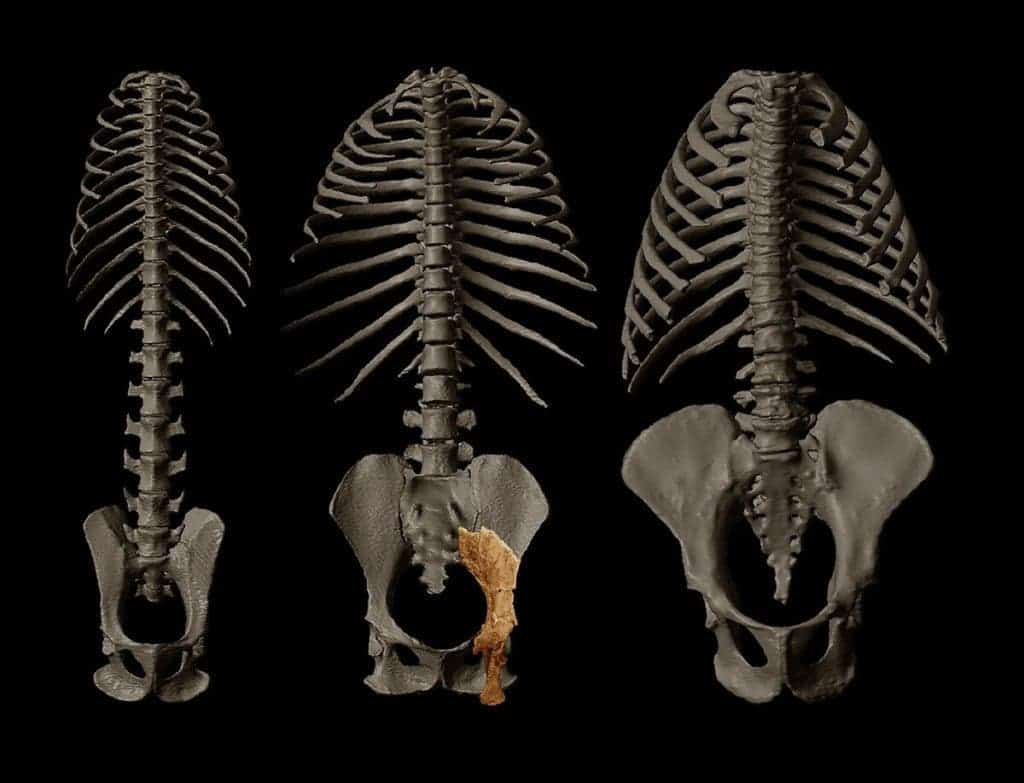Upright walking is one of the hallmarks of our species yet the origin of human bipedal locomotion is still a subject of heated debate among experts and scholars. How did our ancestors ever make the jump from walking on all fours to an upright gait? Well, what if our early ancestors were far more equipped to walk on two legs than we’ve given them credit for? This exciting possibility was recently proposed by researchers who studied the fossils of a 10-million-year-old small-sized ape.

Carol Ward, an anthropologist at the University of Missouri, analyzed the pelvis bone belonging to a Rudapithecus specimen. The fossil was unearthed near Rudabánya, an old mining town in Hungary.
The pelvis was initially discovered by David Begun, a professor of anthropology at the University of Toronto. Previously, Begun had studied limb bones, jaws, and teeth belonging to Rudapithecus, showing that it was a relative of modern African apes and humans.
The new study now offers information about Rudapithecus‘ locomotion and posture.
“Rudapithecus was pretty ape-like and probably moved among branches like apes do now—holding its body upright and climbing with its arms,” said Ward, a Curators Distinguished Professor of Pathology and Anatomical Sciences in the MU School of Medicine and lead author on the study. “However, it would have differed from modern great apes by having a more flexible lower back, which would mean when Rudapithecus came down to the ground, it might have had the ability to stand upright more like humans do. This evidence supports the idea that rather than asking why human ancestors stood up from all fours, perhaps we should be asking why our ancestors never dropped down on all fours in the first place.”
The pelvis was not complete but using modern 3-D modeling techniques, the researchers filled in the blanks and digitally completed the bone. The reconstruction allowed them to then compare Rudapithecus’ pelvis to modern animals.
Modern African apes, such as chimpanzees and gorillas, have a long pelvis and short lower back. For this reason, they typically walk on all fours when they’re on the ground. Humans, on the other hand, have much more flexible lower backs, which allows them to walk on two legs without expending a lot of energy.
If humans evolved from an ancestor built like an African ape, significant changes would have had to be made to the pelvis and lower back. This is why Ward believes that it is plausible that we evolved from an ancestor that looked more like Rudapithecus — the transition to upward locomotion would have been more straightforward.

“We were able to determine that Rudapithecus would have had a more flexible torso than today’s African apes because it was much smaller—only about the size of a medium dog,” Ward said. “This is significant because our finding supports the idea suggested by other evidence that human ancestors might not have been built quite like modern African apes.”
In the future, the researchers plan on conducting more 3-D models of the other Rudapithecus fossils in order to learn more about how it moved about, perhaps offering more insights into how our ancestors left the safety of canopies to bravely explore the world on two legs.
The findings were reported in the Journal of Human Evolution.


